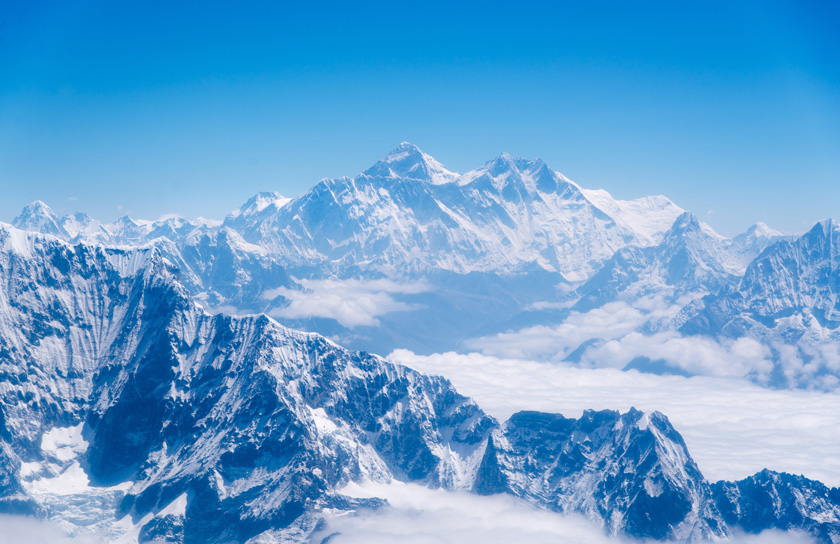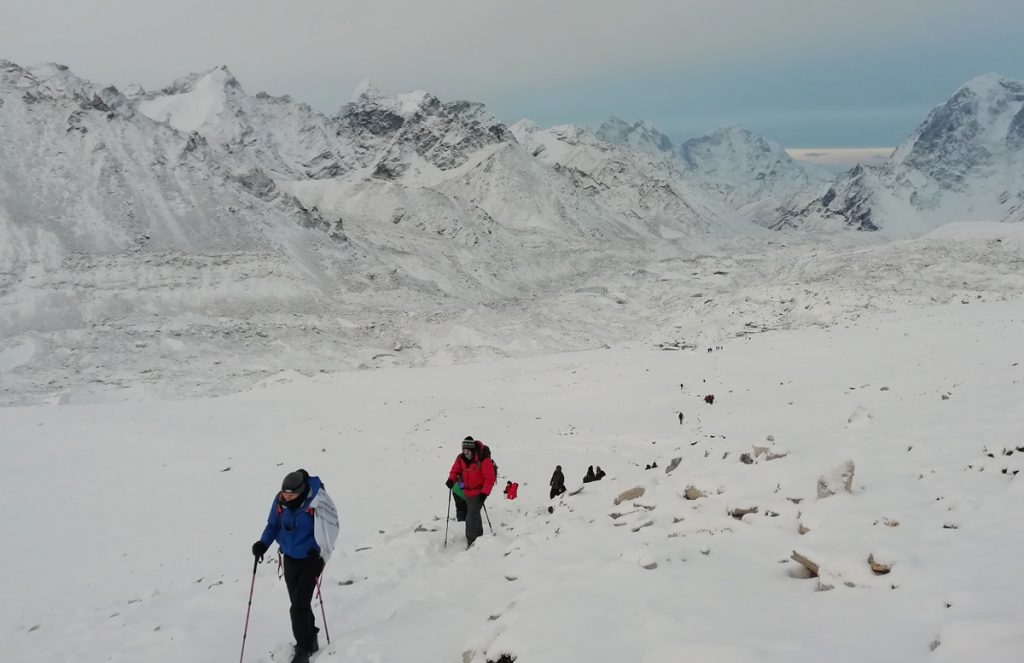5 Interesting Facts about Mount Everest

Mount Everest is the world’s tallest peak that lies between Nepal and Tibet, the autonomous region of China.
Two legendary mountaineers – Sir Edmund Hillary and Tenzing Norgay Sherpa successfully climbed Mt. Everest on May 29, 1953 for the first time.
After their historic climb, more than 5000 mountaineers have summited Mount Everest up to the year 2021.
Read up the blog as we guide through the interesting facts you should know about Mount Everest.
Naming of Mount Everest
In the 19th century, the team of the Great Trigonometric Survey of British India started measuring the Indian subcontinent land including the Himalayas.
“Mount Everest” was named after George Everest, the Surveyor General of British India in 1865.
The Nepali name of Mt. Everest is Sagarmatha, which means “Goddess of the Sky.” While the Tibetan name of Everest is Chomolungma, which means “Goddess Mother of the World”.
Mount Everest grows every year
As per the 1865 survey, the height of Everest was 8,839.8 meters or 29,002 feet.
Thereafter, various surveys were done to measure heights, and it has been updated regularly. In other words, Mt. Everest hasn’t stopped growing over the years.
The new official height of Mt. Everest is 8,848.86 meters or 29,031.69 feet.
The survey was conducted by the joint efforts of Nepal and China, and the new height was declared together on 8 December, 2020.
Extreme weather conditions
Summiting Mt. Everest is a dangerous undertaking.
Several natural forces such as bad weather conditions, extreme cold temperatures, jetstreams and avalanches make the climbing expedition even more challenging.
The weather is very unpredictable on Mt. Everest.

The summit temperature can reach as low as -80 F. The average temperature ranges -13 F to -17 F during the peak climbing months of May and October.
Besides the freezing temperature, the jet stream blows all year long on Mt Everest. The fast moving freezing winds speeds over 200 mph.
The snow and ice cause natural threats like avalanches and crevasses.
The region of Mt Everest above 8,000 m is called the “death zone”. The oxygen level in the air is so low that the body cannot function properly and essentially can cause brain swelling and high altitude pulmonary edema (HAPE).
High Altitude Graveyard
On Mount Everest, the death rate is high due to its high altitude, low oxygen level and extreme weather conditions.
It’s a common sight for climbers to spot death bodies during the expedition. The body remains frozen in time because of the very low temperature.
More than 300 dead bodies remain on Mt. Everest till date.
Also, the evacuation of these dead bodies is a very risky and challenging task. It requires a lot of money (thousands of dollars) and effort from experienced Sherpas – potentially risking their lives.
That’s why the climber corpses are left behind, making the mountain a high altitude graveyard.
Plants and animals live on Mount Everest
While many species of wildlife and vegetation are found in Sagarmatha National Park at lower elevations, still there is a existence of life on Mount Everest’s upper reaches, one of the most extreme environments on Earth.
Himalayan Jumping Spider is the highest living animal in the world that can live on Mount Everest up to altitude of 6700 m.
Bar headed goose, also known as the world’s highest flying bird, is observed up to an altitude of 11278 meters/37000 feet. Also, Ruppell’s Griffon Vulture can be seen flying high above Mount Everest.
Animals like Blue Sheep, Wild Yak, Pika and Tibetan Gazelle can be spotted up to an altitude of 6100 meters.
Besides, certain types of plants such as lichens and mosses are found on Mount Everest.
Just as importantly, we have mentioned a few but there are many more interesting facts about Mount Everest. Check out our Everest Base Camp Trek 14 days, and you could be trekking and exploring the Mount Everest region for yourself with us.
